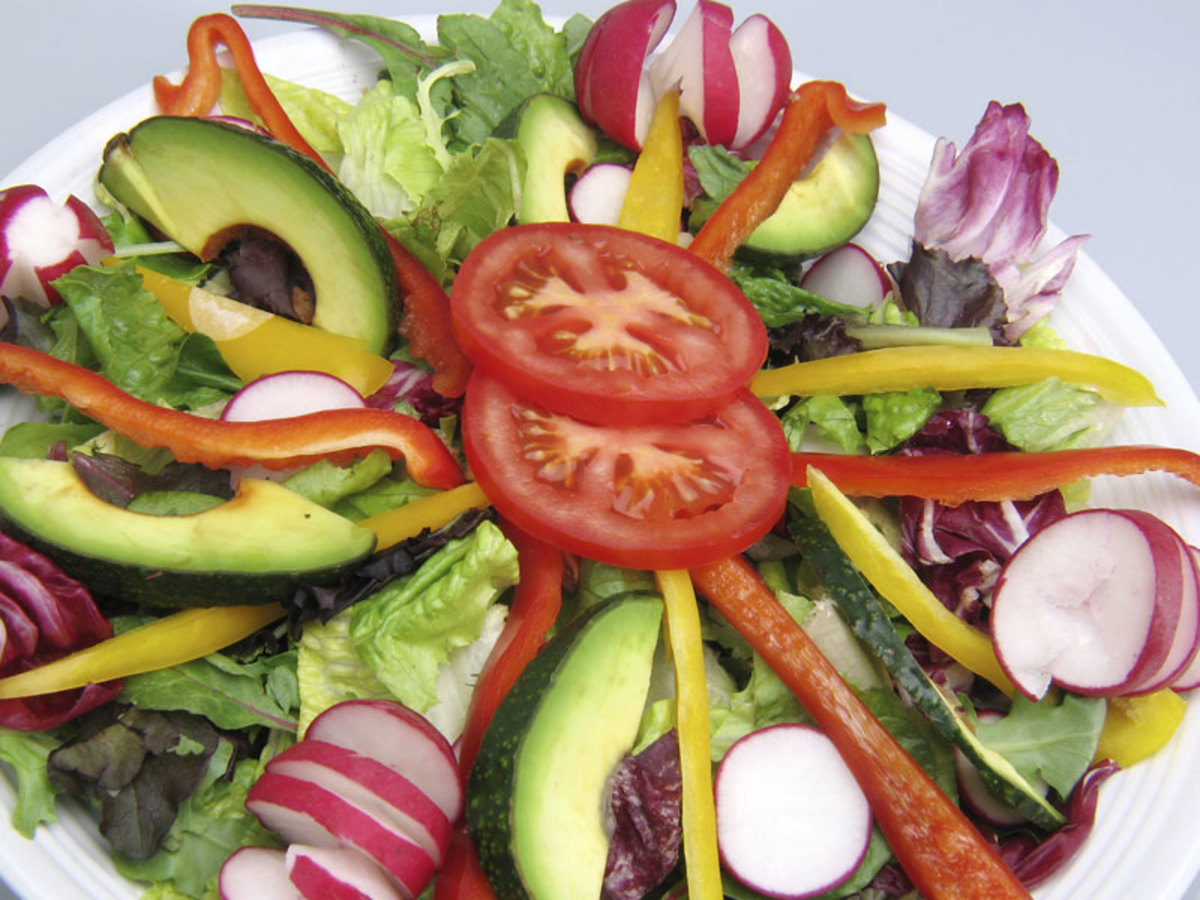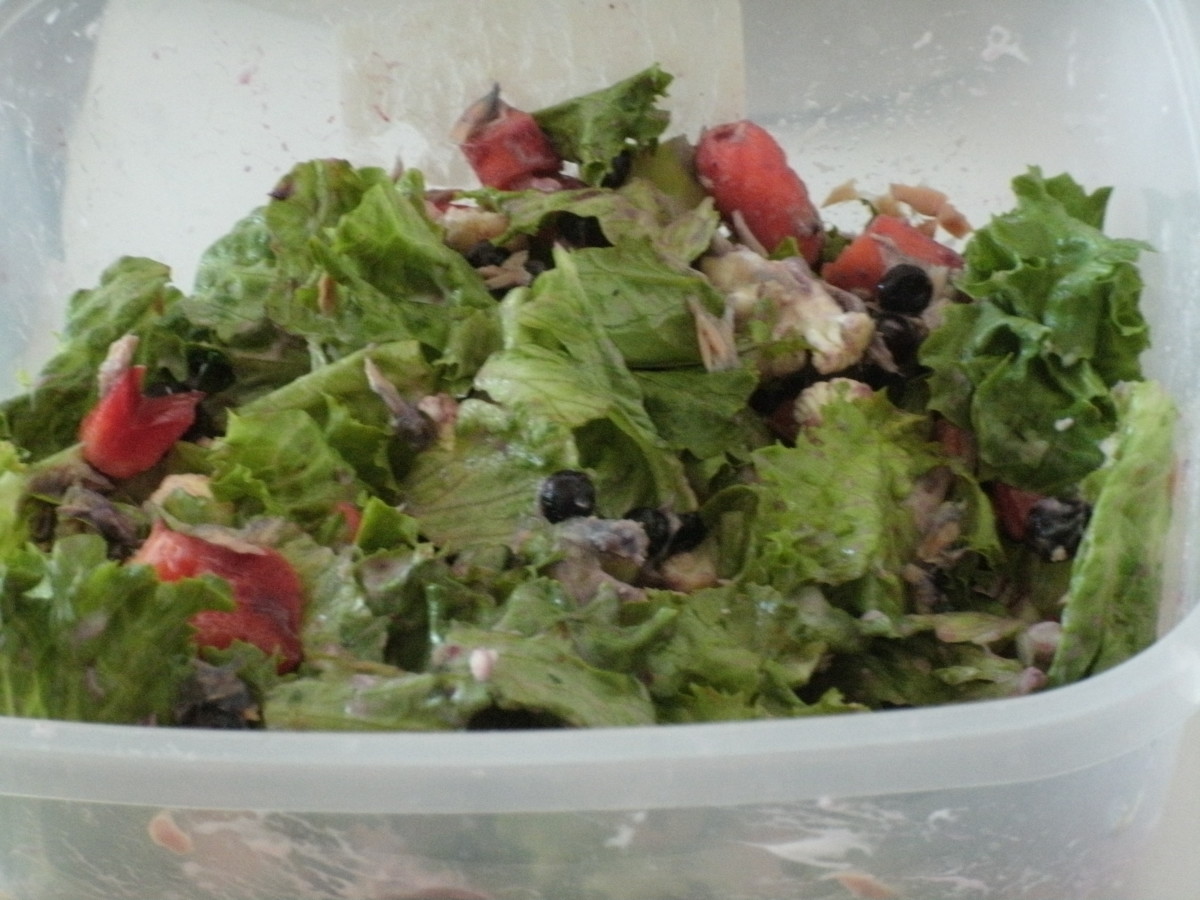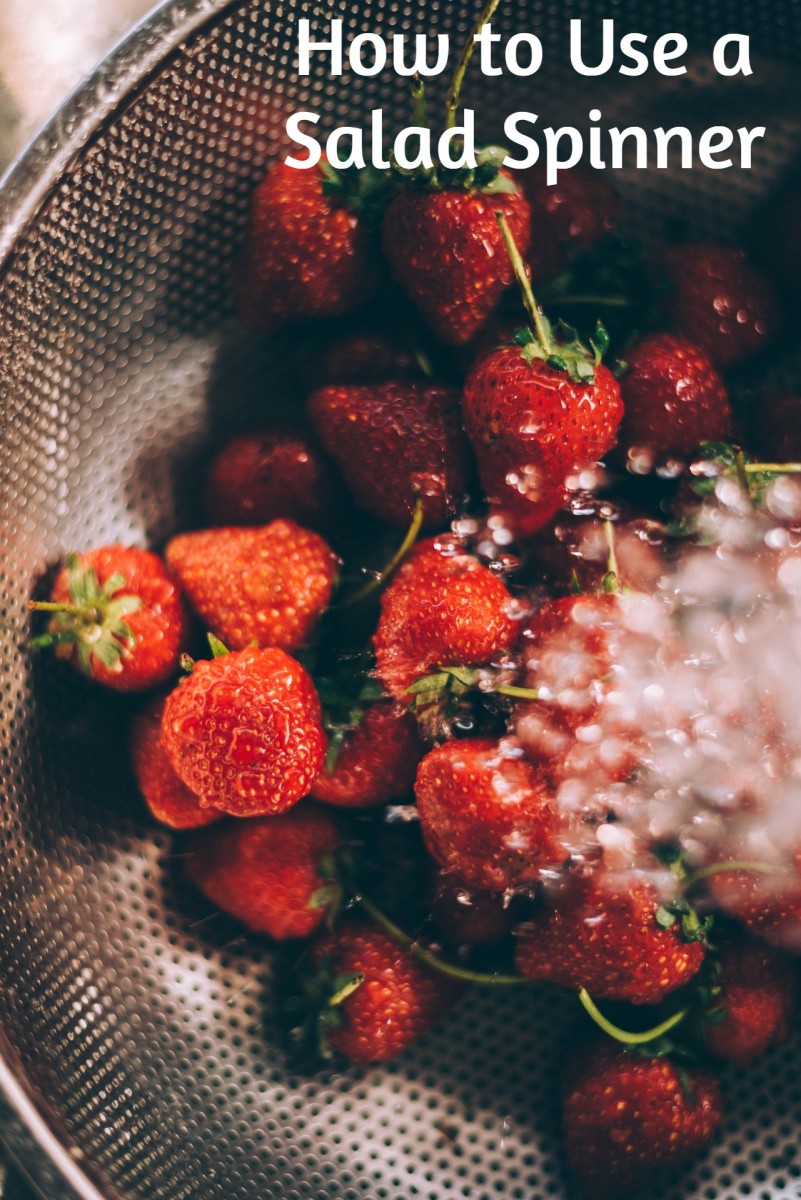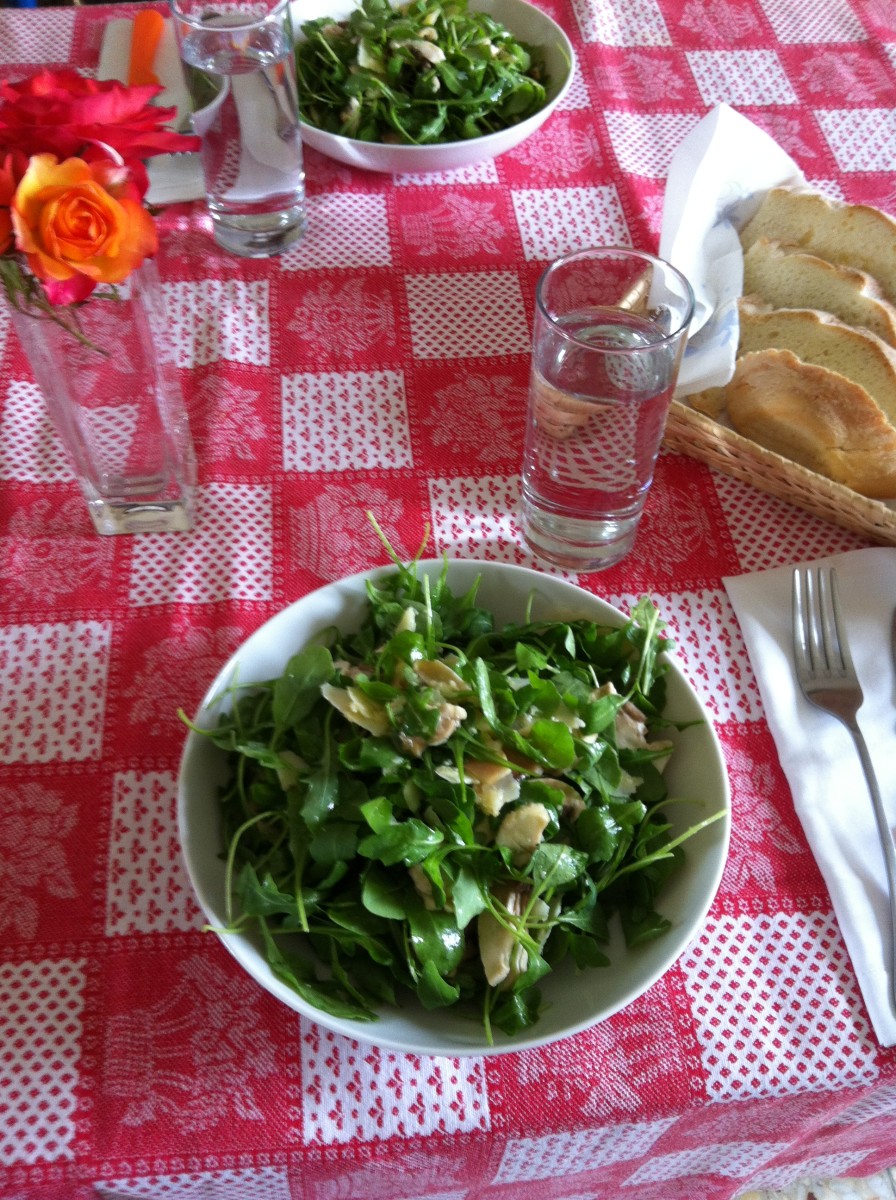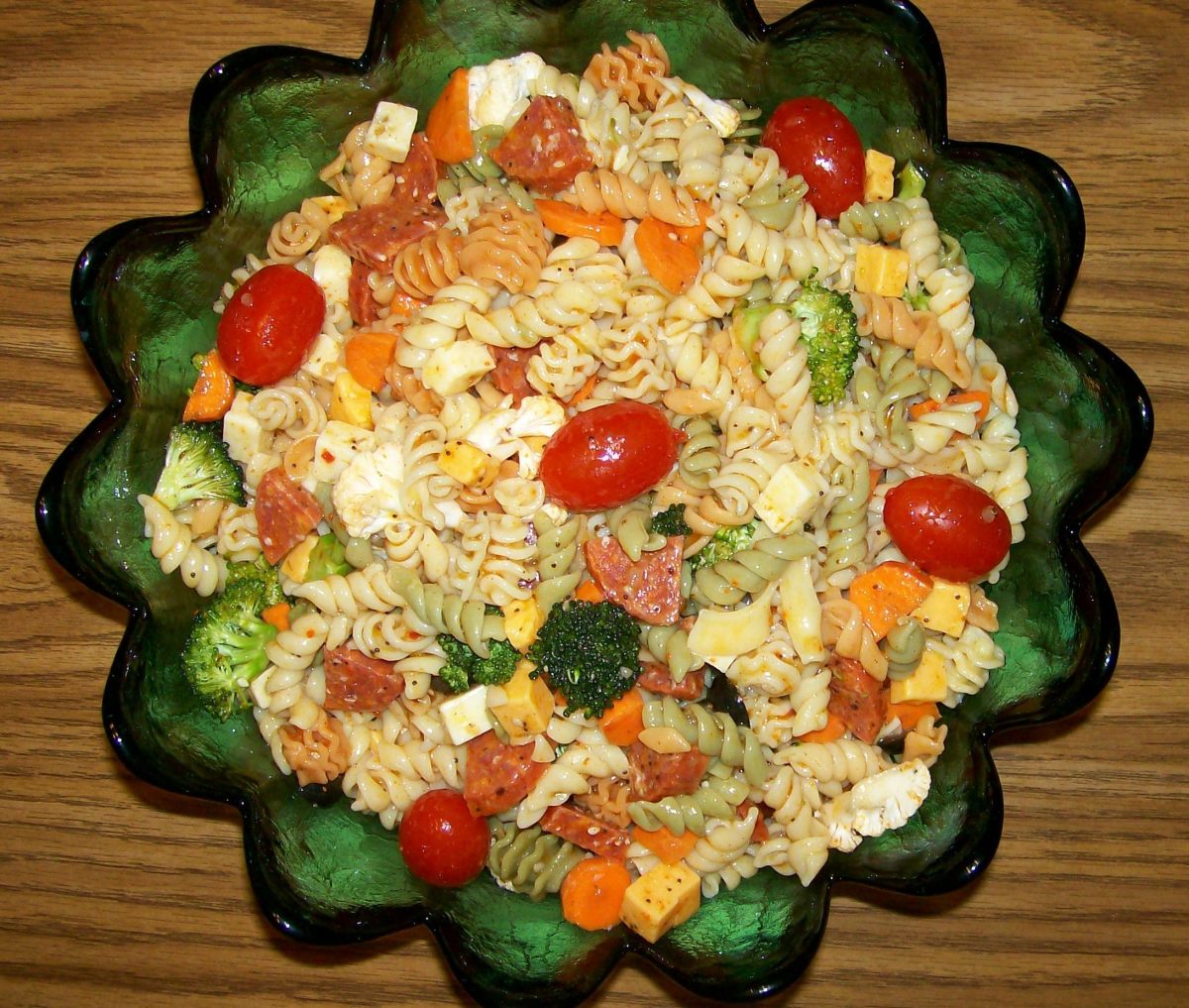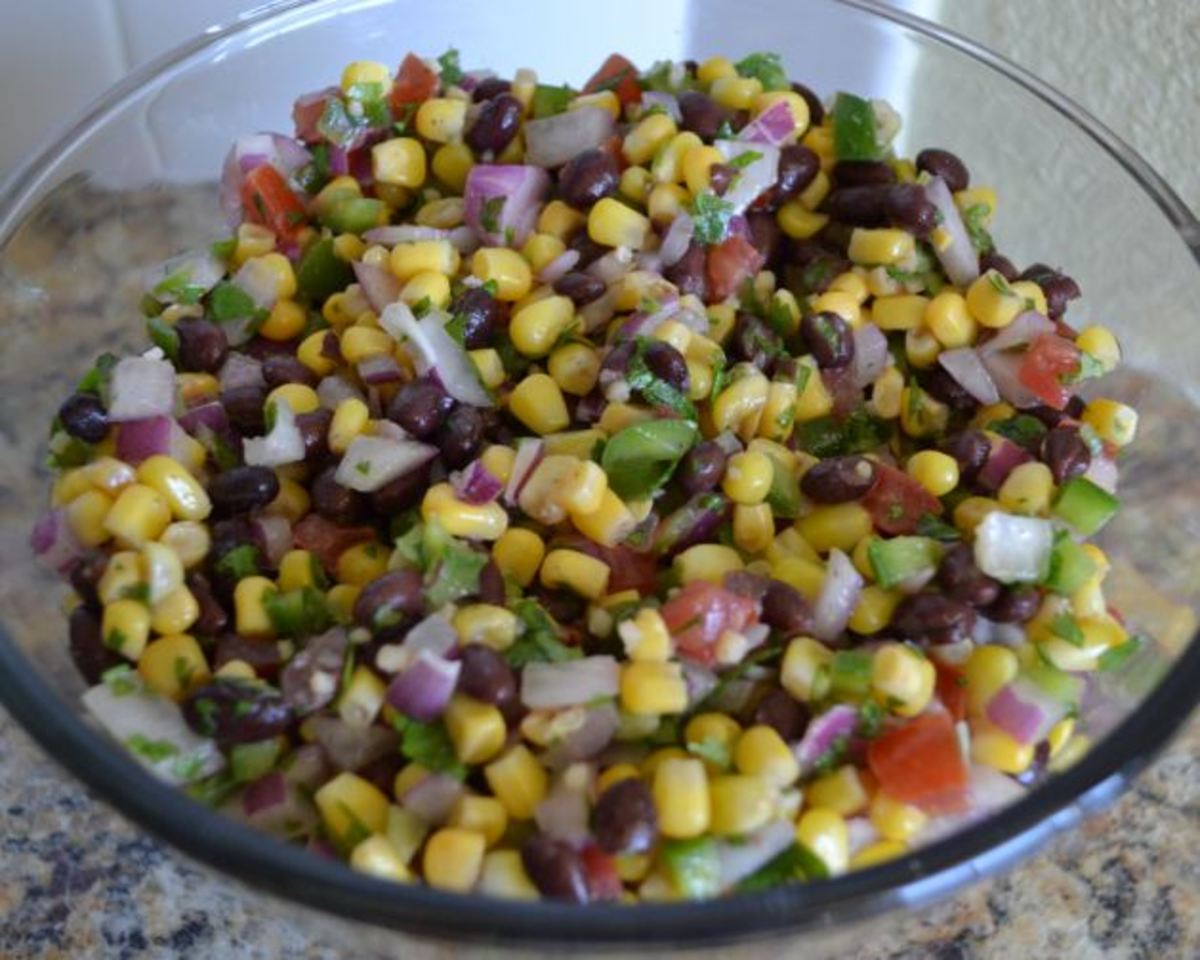Healthy Chicken Garden Salad
Healthy Chicken Garden Salad
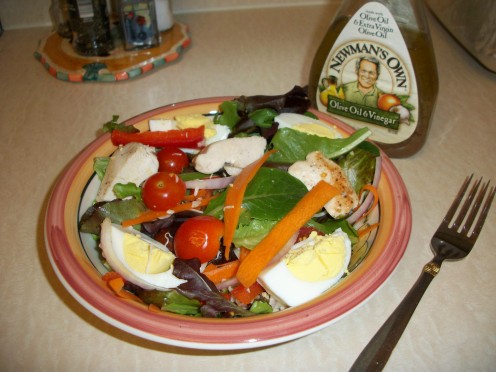
Healthy Alternative to Fast Food When You are on the Go!
This Healthy Chicken Garden Salad recipe is created as a big batch to have for lunch during the work week. If you are short on time or want more convenience, you can use a rotisserie chicken from the grocery store instead of cooking your own chicken. Another tasty substitute for chicken would be cooked or canned (and drained) Salmon. After making this big batch of salad, I then put into individual serving containers with the quartered eggs and sliced chicken, then the containers are ready to grab and go in the mornings. Another great salad to brown bag, or just have for a quick weekend lunch or dinner, is a nice Chef Salad. Click on this link for the recipe.
Secret to Fresh Salad Greens
Many of my garden salads are made in advance all at once. I have found it is helpful to wash the greens with vinegar and cold water to make them last longer. Bagged lettuce is very convenient when short on time, but most weeks I will buy fresh heads of red, green, or romaine lettuce.
Fill up your kitchen sink with cold water and add a few tablespoons of white vinegar and about 3 cups ice cubes to the water (always make sure your kitchen sink is clean beforehand). Place the lettuce in the cold vinegar water and let set for 20 minutes or so. Then swish the lettuce around to get it cleaned. Tear the lettuce into bite-sized pieces and place in the salad spinner to dry.
You will not taste the vinegar and it may help in preserving the greens throughout the week. You may even rinse under cold water before placing in the salad spinner if that is a concern. Make sure the lettuce is not wet when assembling with the other ingredients.
Cook Time
The Benefits of Eating Poultry
An average 5 ounce serving of chicken provides 35 mg of protein, which is more than half an adult’s daily requirement. Roast chicken eaten with skin has 9 grams more fat per 4 ounces than skinless roast chicken. Some Chinese therapists believe that chicken can help relieve symptoms of diarrhea, water retention, and poor appetite associated with spleen and pancreas imbalances. Today, therapists may advise against eating chickens that have been fed antibiotics to prevent infections from spreading among birds kept together.
Those who are dieting may find white turkey meat a good source of protein because of the low fat content. Lean chicken and duck that is cooked using a low fat method and served without the fat and skin are also good alternatives. These protein rich foods may also influence the appetite centers in the brain, helping to create a feeling of fullness.
Poultry and gamebirds are ideal foods for those trying to identify allergies since they are known for rarely causing allergic reactions. They are ideal foods for all stages of life because they provide nine essential amino acids that are needed for the growth and repair of tissues, and they are easy to digest.
Prepared turkey or chicken slices are useful “power sources” for quick snacks if concentration falters during certain times of the day. This is because all poultry and gamebirds contain good amounts of amino acid tyrosine, which the brain uses to produce norepinephrine and dopamine. These two substances trigger the brain cells that enhance concentration and mental alertness.
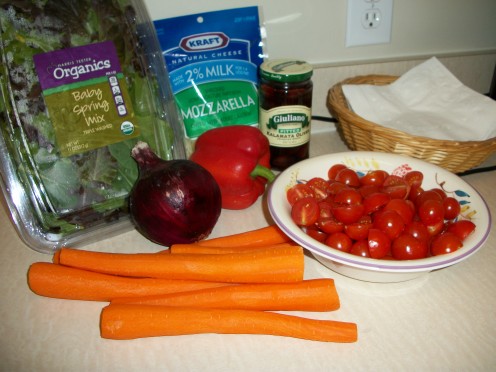
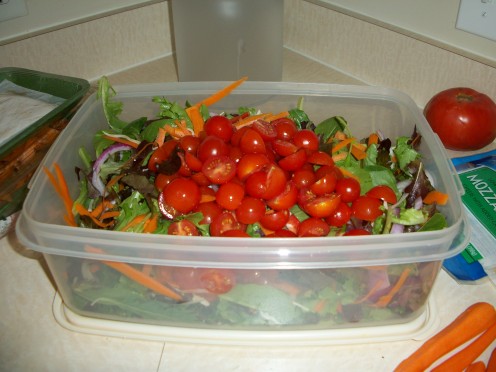
Ingredients
- 16 oz Chicken Breasts Strips
- 1 Spray Olive Oil Spray
- Dash Salt and pepper, to taste
- 11 oz. Container of Organic Baby Field Greens
- 6 Carrots, peeled
- 1 container Sweet Cherry Tomatoes,, sliced in half
- 1/2 Medium Red Onion, thinly sliced
- 1 Red Pepper, Sliced in strips
- 20 Kalamata Olives, pitted, sliced, and drained
- 1 cup Shredded Mozzerella Cheese
- 5 Hard Boiled Eggs, sliced into quarters
- Heat Olive Oil spray in a large sauté pan on Medium heat. Salt and pepper the chicken breast strips on both sides. Once the pan is heated, place the chicken breast strips in the pan and cover with a lid. Cook about 3 minutes on both sides, checking to make sure the chicken is not overdone. You have to be careful with white meat chicken because it dries out very easy.
- Combine the organic greens, sliced cherry tomatoes, diced carrots, red onion, pepper, olives, and cheese and mix real good. I take a vegetable peeler and make strips out of the carrots, but you can dice them into 1 inch pieces if you prefer. For each serving use about four cherry tomatoes and about four of the kalamata olives. Evenly distribute the red onion, red peppers, and cheese for each serving.
- For each serving add a boiled egg quartered and a few slices of the cooked chicken. Serve with your favorite dressing and enjoy.
Benefits of Eating Onions
Related to garlic, the onion family includes chives, shallots, and leeks. Onions have been used in cooking and for their medicinal properties for thousands of years. Traditionally they have been used as a home remedy for coughs, colds, and bronchitis. Simmering an onion in water with a little honey, then eating the onion and repeating this every 4 hours has been noted to be a remedy for coughs.
An average sized onion weights about 90g and provides about 5 percent of an adult’s daily potassium needs. They are also a rich source of quercetin. They may help to ward off heart disease if eaten 3-4 times a week. Also placing a fresh onion slice on insect bites have shown to reduce the swelling.
Tobacco smoking is one of the major causes of bladder cancer in humans. It is believed that the flavonoids such as the quercetin present in onions are converted into substances that protect the bladder lining from carcinogens. Regular intake of onions may help prevent cancer. Of course if at all possible you should stop smoking. Tobacco smoking is a powerful addiction and it may take a few times to quit.
Benefits of Eating Peppers and Chilies
A medium-sized pepper about 5 ounces provides more than three times the recommended daily adult intake of Vitamin C. Buy well shaped, firm, thick peppers that have a bright, shiny color. Keep in the refrigerator for up to 12 days. Key Benefits include:
- May protect against stomach ulcers and cancerous changes within the body
- Fkight infectious diseases
- Act as natural painkillers
- May help to fight the common cold
Benefits of Eating Salad Leaves
Salad Leaves include spinach, endive, chicory, cress, raddichio, arugula, red leaf, Boston or Bibb lettuce, Belgian Endive, Watercress, and Frisee. In Chinese medicine, salad leaves are used as a diuretic and to “dry out” digestive problems. They are given to expectant mothers to increase a mother’s milk production. Spinach strengthens the blood and cleanses it of toxins that can cause skin disease. In China, people believe that spinach helps bowel movements, the flow or urine, and relieves herpes irritations.
There is evidence that regularly eating salad leaves decreases the risk of colonic cancer. This is partly due to their supply of antioxidants which help stop the production of carcinogens, and partly due to the fiber that they provide. Fiber appears to reduce the risk of colonic cancer in several ways.
A good amount of folate is found especially in cress, frisee, spinach, and lettuce. Eating folate-rich foods on a regular basis is believed to help reduce the risk of heart disease. Eating folate and folic acid can also reduce the risk of spina bifida, a defect of the spinal column. Calcium is found in spinach, cress, and frisee which the body needs for the formation of strong bones.
© 2012 Michelle Dee


